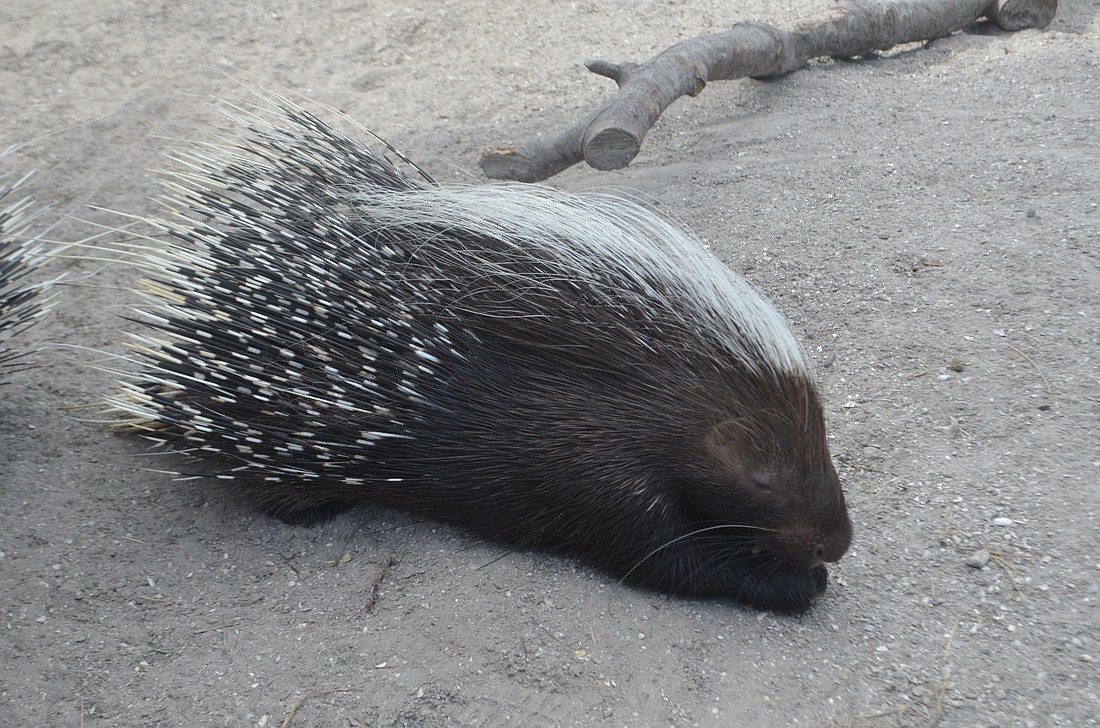- December 26, 2024
-
-
Loading

Loading

When Big Cat Habitat and Gulf Coast Sanctuary obtained their first two-toed sloth last July, Danielle and Clayton Rosaire housed the exotic animal at their East County home until accommodations could be built at the sanctuary.
Their current tenants-in-waiting might pose more problems around the house.
Porgie and Bess, a pair of African Crested Porcupines, are making the best of a temporary enclosure at Big Cat Habitat and Gulf Coast Sanctuary while their future habitat is being designed and money is being raised to pay for it.
The African crested porcupine is the largest porcupine in the world, ranging in size from two to three feet long and weighing between 22 and 66 pounds.
Making it harder to keep the pets in the living room are those 12- to 13-inch quills, which generally are used for protection. If threatened, the porcupine will run backward and ram its perceived attacker. Those quills have been known to injure, or even kill predators, such as lions and leopards.
"When they get scared, they puff up really big," said Doc Wasabi, an animal handler at Big Cat Habitat. "They can't control it. When they hear a motorcycle or a loud noise, and you're too close, you might get stuck."
Big Cat Habitat held an open house on April 26 to introduce Porgie and Bess to the public and to raise awareness of the importance of expanding the habitat necessary to house their big cats and exotic animals. Big Cat Habitat is in the midst of a $500,000 capital campaign to construct an onsite animal clinic for routine and emergency care of its exotic animals along with a private habitat area for senior animals or those who might temporarily need a quieter space.
Among the improvements will be the new home for Porgie and Bess.
"We want to give them more room and more of a natural habitat than they have now," Wasabi said. "They like to dig and we want to give them space where they can do that without escaping."
Kay Rosaire said the porcupines' habitat should be built quickly, possibly being ready by June. Big Cat Habitat was hoping to use some of the funds from the May 1-2 Giving Challenge to build the habitat.
“These animals have found a permanent home,” Kay Rosaire said. “They’re not going anywhere after this.”
Wasabi has enjoyed caring for the porcupines.
"They're absolutely lovely," he said. "Most people don't know they exist."
Porgie, the male, arrived late in 2017 after his owner in New York asked the sanctuary to accept him. He had been performing for the Ringling Bros. and Barnum & Bailey Circus until it closed in 2017. Porgie would run circles around a horse and dog as they did their acts during the show.
Bess just arrived at the Big Cat Habitat from a breeder of African Crested Porcupines in Myakka City. Kay Rosaire said the area does have its share of exotic animal breeders, which isn't a bad thing for some of the species which are struggling in their natural habitat.
Wasabi said the porcupines will shed their quills in the same fashion a dog sheds its hair.
The quills get thicker those closer they get to the porcupine's skin.
The animals are nocturnal, and usually can be found digging late at night to work on their burrows.
Their eyesight is poor but their sense of smell is excellent.
Porgie and Bess are friendly, Kay Rosaire said.
“They’ve been raised by humans so they’re not scared at all,” Rosaire said as Porgie ambled up to Wasabi and began sniffing at his hand, which held a treat.